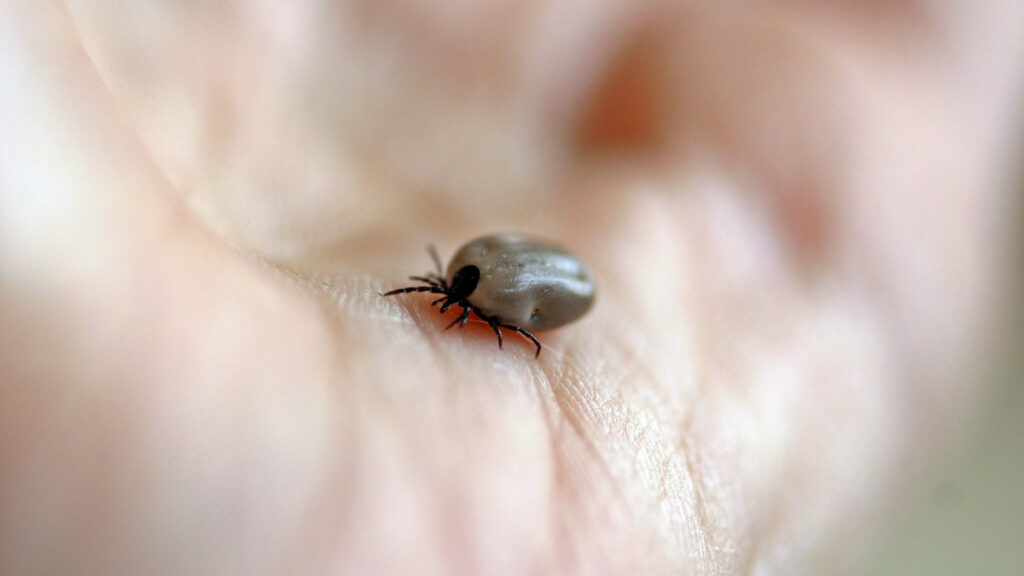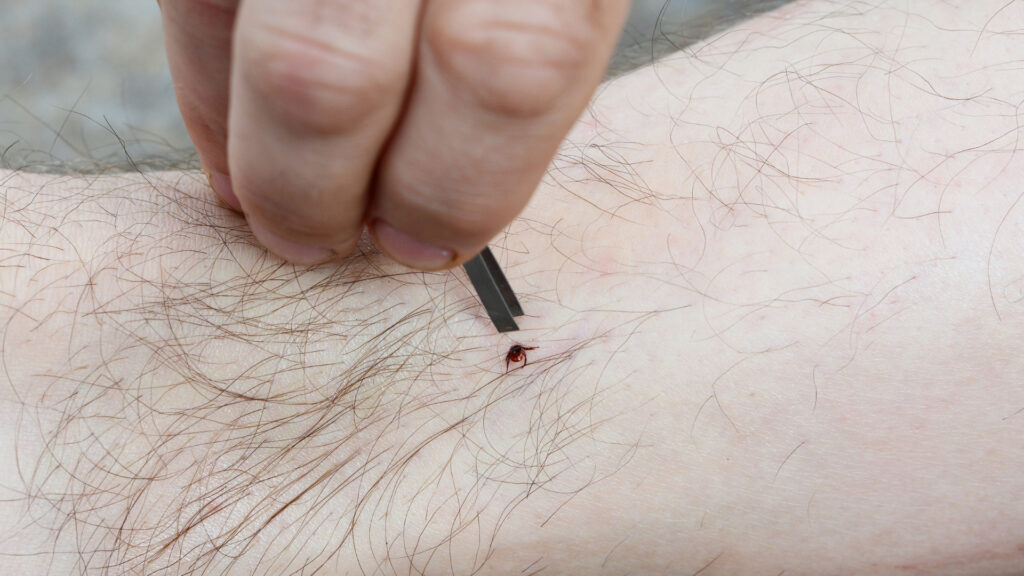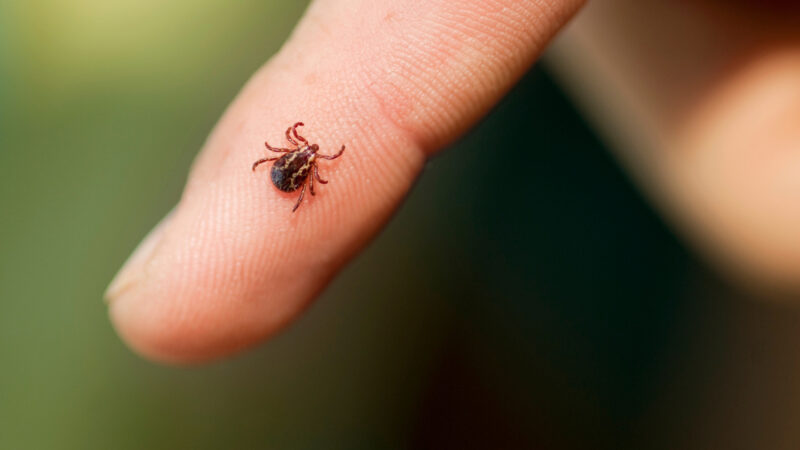Table of Contents Show
Spending time outdoors can allow you to come home with some priceless memories. Unfortunately, you can also come home with a tick or two. But what does a tick look like, and how do you remove it?
If you’re unsure of either of these, you better keep reading. Today, we’re answering these critical questions to help you stay safe while spending time outdoors.
Let’s get started!
What Is a Tick?
A tick is a small parasite that feeds off animals and humans. They will attach themselves and live on the outside of their host. They’re active throughout the year but thrive in the warmer months between spring and early fall.
You’ll often find them in wooded areas and grasslands. Additionally, they’ll live in urban and suburban yards, parks, and other natural areas.
Despite their tiny size, you should take these pests seriously. They can carry bacteria and viruses and pass them to the host. Some tick-borne diseases include Lyme disease, Rocky Mountain Spotted Fever, and Ehrlichiosis or Anaplasmosis.

What Does a Tick Look Like?
Ticks are tiny and have flat, oval-shaped bodies. They have an outer shell known as an exoskeleton. From there, their body splits into two main parts: the capitulum and the idiosoma. They’re typically a light brown, reddish-brown, or dark black color.
Their size varies significantly depending on whether they’ve eaten or not. When unfed, they can be as small as a pinhead. However, after they’ve eaten, they swell up significantly and are much easier to spot on the host.
How Do You Tell If a Tick Is Embedded in You?
If you find a tick on you or a pet, you’ll want to remove it as soon as possible. Unfortunately, their mouths have parts called hypostomes, which anchor them to the host. Once attached, it can be challenging to remove them.
The first thing you need to do is check the area. When a tick attaches to a host, it buries its mouth into the skin. Because they’re so tiny, you may need a magnifying glass to look closer.
Using a pair of tweezers to get a firm grip can help, too. If it’s attached, you’ll feel resistance when you attempt to remove it.
How to Properly Remove a Tick
Knowing how to remove a tick properly is essential. If you twist or jerk them, you risk breaking off their heads and leaving parts in your skin. Here are some things to do if you discover one on you or an animal friend.
Gather the Supplies
Before getting started, make sure you gather the proper supplies. This typically means fine-tipped tweezers, gloves, disinfectant wipes, and a small container or ziplock bag. If you’re heading out into a tick-infested area, you’ll want to have these supplies readily available.
Waiting to remove them until the end of your trip or when you get home can be a bad decision.
The longer they’re on you or an animal, the greater their chances of transmitting bacteria and viruses. Make sure your first-aid kit has the essentials for these types of situations.
Firmly Grasp the Tick and Gently Pull
After gathering the supplies, you can get a hold of it. Again, wear gloves to avoid getting the parasite onto your hands or coming in contact with its blood. Make sure you’re in an area with plenty of light so you can see what you’re doing.
Take your tweezers and get a firm grip on its mouthparts. You want to avoid squeezing its body while you pull gently and steadily. Again, don’t crush, jerk, or twist it. You want to remove the entire tick, including the mouthparts in your skin.
You must remain patient and take your time, especially if it has gotten plenty to eat. This will often result in them growing large and having a firm grip on you.

Dispose of the Tick Properly
After removing it, you want to dispose of it properly. Place it in a small container or sealable plastic bag or tape it to an index card. If you’re worried about disease transmission, save the parasite so a medical professional can look at it.
Those who put it in a small container or sealable plastic bag can dispose of it in the trash. You can burn it if you’re outdoors and have no place to store it. Hold it between the tweezers and use a lighter or match to burn it to a crisp.
Clean the Area
Clean the area once you’ve removed and disposed of the tick. If you have access to soap and water, it can effectively remove bacteria and germs. However, if you’re in the middle of the wilderness, you may have to use antibacterial or disinfectant wipes.
Applying an antiseptic or cream will reduce the chances of an infection. Make sure to cover it with a bandage afterward to give the ointment time to do its job. And don’t worry; applying any protective cream won’t hurt.
Monitor the Bite Area
Now that you’ve removed the tick, disposed of it, and cleaned the area, you’ll want to monitor the bite area.
Watch for changes over the next few days. Typically, this means redness, swelling, increased pain, or signs of infection. If you notice any of these, seek medical attention immediately.
In the most severe situations, it’s common for individuals to develop a bull’s-eye-shaped mark. They’ll also experience flu-like symptoms. The longer you wait for treatment, the worse the situation can get.
Pro Tip: Does your RV need new tires? Before you make your purchase, check out our Ultimate RV Tires Buyers Guide.
How to Prevent Ticks from Finding You
Thankfully, there are some things you can do to prevent them from finding you. Here are a few of our best tips to help you enjoy spending time outside without worrying about ticks and other parasites.
Avoid Tick-Infested Areas
They’re more common in some areas than others. You can often find them in wooded areas, tall grasses, and shrubs. They can jump onto you as you brush against these items while exploring nature.
When possible, stay on trails. Venturing off the path and into tall grasses or dense vegetation increases your chances of an encounter.
Use Tick Repellent
Whether hiking, biking, or spending time outdoors, wearing repellent can help you keep them off you. Look for tick-repellent products registered with the U.S. Environmental Protection Agency. Some of the most effective products contain DEET, picaridin, and permethrin.
You need more than one application if you’ll be in the wild for several hours. Like sunscreen, you’ll need to reapply as needed. Apply a thin layer to any exposed skin, especially your arms, legs, neck, and face.
- Two 4 oz cans of OFF! Deep Woods Insect Repellent Aerosol protect against mosquitoes
- Outdoor bug repellent is formulated with 25% DEET and provides long lasting protection from mosquitoes, making it an...
Wear Protective Clothing
When preparing for your outdoor adventure, consider the clothes you’ll wear. Wearing long-sleeved shirts and long pants can help prevent ticks from attaching to you. Light-colored clothing can make it easier to spot any that jumps onto your clothes.
It’s also a good idea to tuck in your clothes. Tucking your pants into your socks or boots can help prevent them from crawling inside your clothing. However, you can take it further by investing in permethrin-treated clothing.
Perform Regular Checks
While outdoors, you should regularly check your clothing or any exposed skin. The sooner you discover them, the better your chances are to avoid them attaching to you. If you’re hiking with others, help each other out. Look for ticks in any spots that may be hard for them to check.
Keep in Mind: Are you tired of pesky bugs? Keep insects out for good with a Bug Net!
Shower After Outdoor Activities
Even if you don’t work up a sweat, it’s a good idea to take a shower once you get out of nature. This helps get dirt and grime off your body and is another chance to look for ticks.
They may have jumped on you and attached someplace that wasn’t obvious. Disrobing and standing in front of a mirror can help you to do a more thorough check.

Watch for Ticks During Your Adventures
They’re not something that you can take lightly. Knowing what a tick looks like is essential for anyone who plans to spend time outdoors. If you don’t take them seriously, you could end up sick or with a disease.
Do yourself a favor and stay aware of the potential for encounters during your adventures. If you discover one, take action immediately.
Have you ever experienced a tick on you or your pet?
Last update on 2024-07-25 / Affiliate links / Images from Amazon Product Advertising API







